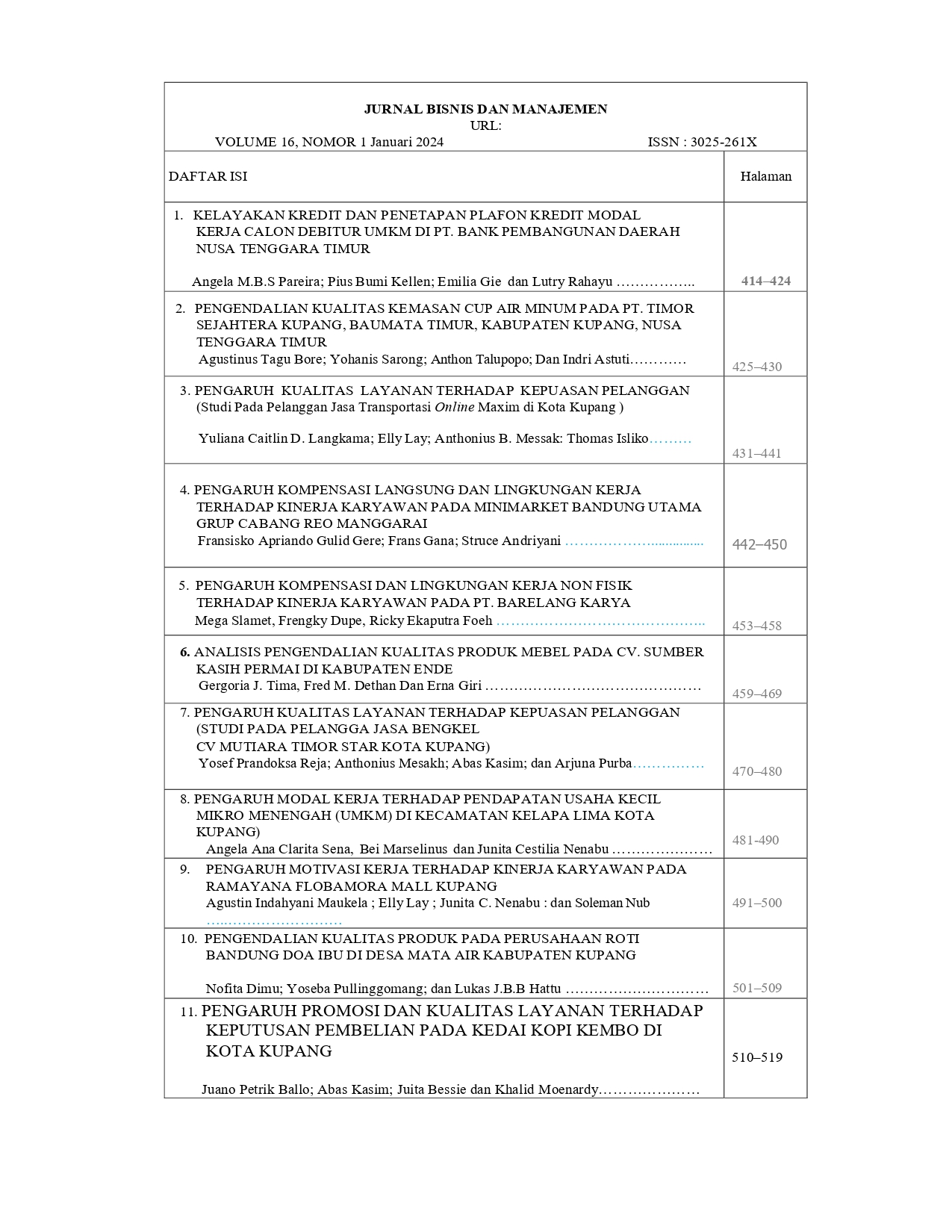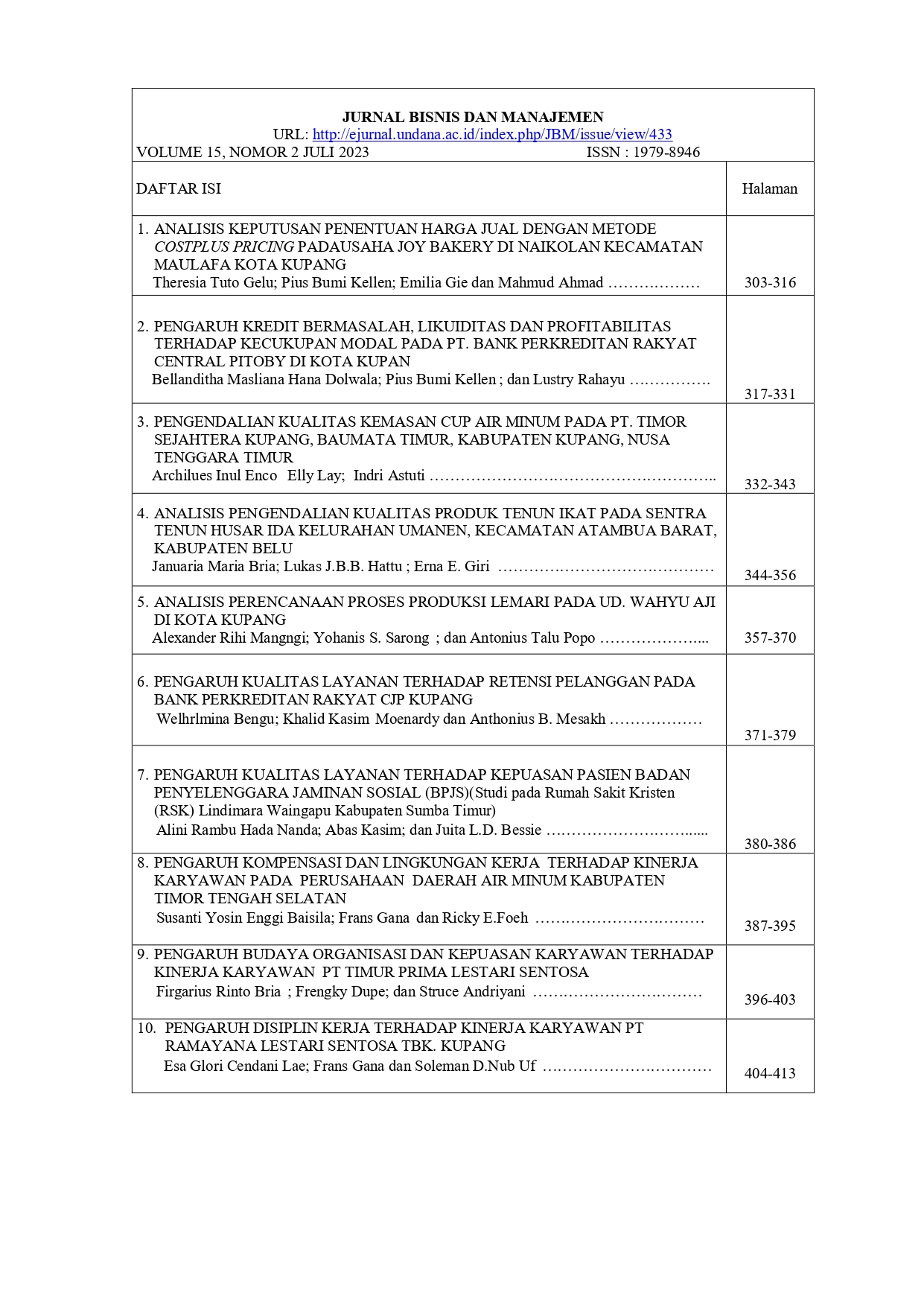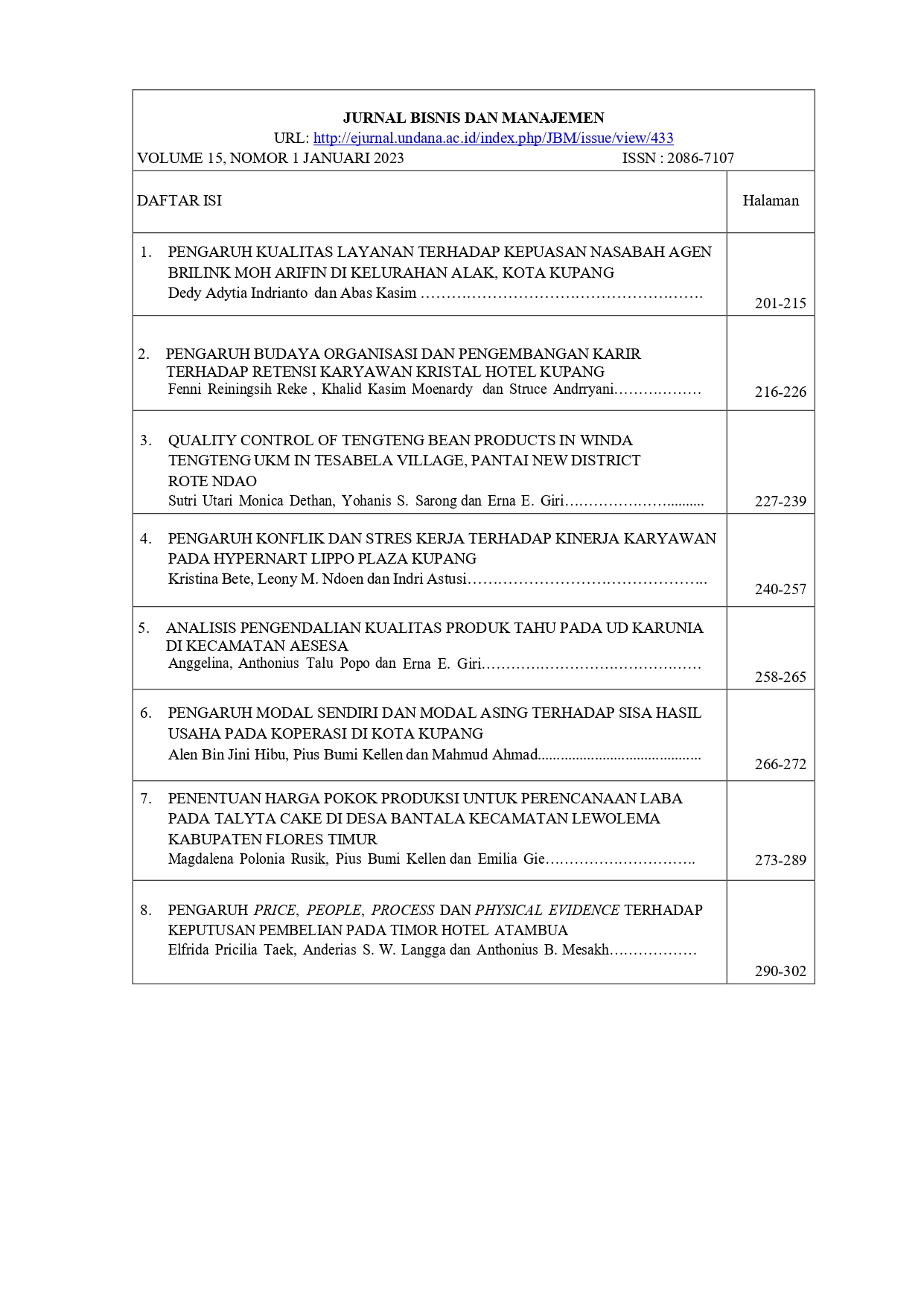EFEKTIVITAS PENGELOLAAN MODAL KERJA DALAM HUBUNGANNYA DENGAN PENINGKATAN LIKUIDITAS DAN PROFITABILITAS PADA PT BOSOWA BERLIAN MOTOR CABANG KUPANG
Abstract
This study aims to determine the effectiveness of working capital management, the factors that influence it, and its relationship with liquidity and profitability. This research is a case study research with a quantitative descriptive approach. The author conducted research at PT. Bosowa Berlian Motor Kupang Branch, Timor Raya Street Number 51, Oesapa Barat Sub-District, Kelapa Lima District, Kupang City. Data collection techniques in this study were interviews and documentation. The results show that the amount of working capital needed shows that the cash side of 20172018 is said to be unhealthy, the 2017-2020 receivables are healthy and the 2020 supplies are said to be unhealthy. The factors that affect working capital include the nature or type of the company, which is an industrial company (automotive) which requires a large amount of working capital, the time required to obtain the goods sold and the price of the goods unit is very influential, the terms of credit given for credit sales are very influential. impact on high turnover rates, and high inventory turnover rates. The effectiveness of working capital management is based on Working Capital Turnover ratio in 2017-2020 meet industry standards. The level of company liquidity in 2017-2020, which is described in Current Ratio, Quick Ratio, and Cash Ratio, meets the industry standards used. The level of company profitability in 2017-2020 which is described in Net Profit Margin, Return on Assets, and Return on Equity still meets the industry standards used except that Net Profit Margin the 2020 does not meet industry standards. The relationship between the effectiveness of working capital management on liquidity and profitability is directly proportional to the level of liquidity and profitability when viewed from the ratio used.

 Fahmy Adam Madisa Muhtar(1*)
Fahmy Adam Madisa Muhtar(1*)





